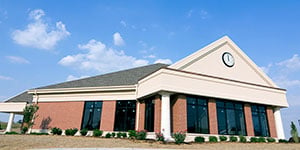Saving, Investing, and Banking: A Brief Primer
Economic models make a lot of spectacular but useful assumptions. In basic versions of the growth models that my students learn in principles of macroeconomics and intermediate macroeconomics, we assumed that saving translates pretty readily and automatically into investment. We assume that the members of a society save a fraction of their incomes, put that fraction into a magic box, and then, presto! The contents of the box becomes new capital goods.
That magic box is the financial market. It’s a market in which people buy and sell debt, ownership shares in firms, and other financial instruments. The financial market links people who wish to save with people who wish to borrow, and it links our current plans about production and investment with future outcomes--namely, consumable output.
Let’s consider the banking system and what it does. First, let’s explore why people save. Then we’ll explore why people borrow. Finally, we’ll explore why banks serve as intermediaries between borrowers and lenders.
5 Reasons People Save
People save for several reasons, most of them obvious. First, they save to insure themselves against big reductions in their standard of living should they lose their jobs. Second, they save to insure themselves against emergencies. Life is a lot easier if you know that you’ll be able to pay for a brake job. Third, they save to finance large purchases. Devotees of Dave Ramsey, for example, pride themselves on living debt-free lifestyles and on paying even for large purchases like cars in cash.
Fourth, people save because they want to have money to spend in retirement. Fifth, people save because there can be a reward associated with it. People who want money now might only be able to get it by offering people an incentive to abstain from consumption, like a higher interest rate. As people generally prefer "stuff now" to "stuff later," paying interest is a way to induce them to abstain from consuming "stuff now" so that you can use that stuff to produce new capital goods or acquire new skills that will allow you to produce more stuff later.
2 Reasons People Borrow
Advisors like Dave Ramsey encourage people to live debt-free lifestyles, but people borrow money for all kinds of reasons. Two of these reasons are the most important. First, people borrow money because they want to consume now instead of waiting for later. Second, they borrow money to finance large investments. Let’s consider each of these in turn.
1. People Borrow to Consume NOW
Consumption smoothing is an idea suggesting that people might want to borrow money while they are young so that they can enjoy fairly constant standards of living. Instead of driving a beat-up clunker and eating at McDonald’s in college and his twenties and then driving a Jaguar and eating at Ruth’s Chris as a successful professional later in life, a successful consumption smoother might borrow money while young in order to drive a Honda Accord and eat at Five Guys in college and his twenties and then drive a Honda Accord and eat at Five guys as a successful professional during his prime earning years. A successful consumption smoother would have the same standard of living at ages 25, 45, and 65.
Debt, however, is like fire. To paraphrase something George Washington is alleged to have said comparing government to fire, it is "a dangerous servant and a fearful master."* For a host of reasons documented by psychologists and economists working on "behavioral economics," people tend to be irrationally present-oriented. Here’s a good rule of thumb that I share with my students. It’s usually OK to borrow money to invest in something like a college degree or a house. It might even be a good idea to borrow money to buy a car (we’ve done this twice). It’s usually not a good idea to borrow money for consumption goods like gas grills, fancy vacations, and expensive dinners.
2. People Borrow to Finance Large Investments
People also borrow money to finance large investments. If I wanted to buy a fast-food franchise, I probably wouldn’t be able to do it with what I’m able to save out of my paycheck unless I was willing to wait for decades. One of the most interesting companies in the world, to my mind, is Planetary Resources, a company that wants to mine asteroids for minerals. This requires a lot of technology that doesn’t exist yet and a very long time horizon. Asteroids contain mind-boggling stocks of metals, but accessing those metals is well beyond our current technological capacity. Planetary Resources can finance at least part of this incredibly-long-term project with borrowed money.
Now imagine you have some money you want to save so you can have a comfortable retirement. A representative from Planetary Resources calls and asks for a loan to help finance an experiment. Then someone from across town calls and asks for a loan so he can buy a house. Then your next-door neighbor calls and asks for a loan so he can remodel his kitchen. Then a college kid calls and asks for a loan so he can go on a bender in Panama City, Florida. Then…
You get the picture. A lot of people want to use your money. How do you decide which loans to make and which loans to deny?
The Role of the Banking System
Enter the banking system. Identifying everyone who might be willing to save and then scraping together enough loans to buy a house or fund an experiment would be really costly for borrowers. Assessing the riskiness of every potential loan and then arranging interest rates and payment schedules would be really costly for lenders.
In their book Common Sense Economics, James Gwartney and his coauthors discuss transaction costs, which are the costs of arranging trades. These transaction costs are embodied in the difficulty of finding lenders (if you want to be a borrower) and the difficulty of finding borrowers (if you want to be a lender). These transaction costs create opportunities for middlemen who can specialize in linking borrowers with lenders and in acquiring and processing information about lenders’ preferences and borrowers’ creditworthiness. When the process works well, resources are allocated to their highest-valued use and mistakes are minimized.
Note that: "when the process works well." It certainly isn’t perfect, but it works surprisingly well. In a future article we will explore how and why the banking system goes haywire, but consider for now just what a well-functioning banking system does. It brings together people who want to save for the future and people who want to invest (or consume) now. You’ve heard it said that good things come to those who wait. When the banking system works well, this is exactly what happens.
*-George Washington almost certainly didn’t actually say that. Here’s a post by Eugene Volokh on the disputed quote.
The preceding is derived from classroom discussions in Principles of Macroeconomics and Intermediate Macroeconomics at Samford University’s Brock School of Business as well as the textbooks from which I teach these courses (Tyler Cowen and Alex Tabarrok’s Modern Principles: Macroeconomics, 2nd Edition and N. Gregory Mankiw’s Macroeconomics, 8th Edition).
 What Is Bank Fraud? How to Recognize It, Avoid It and Report It
What Is Bank Fraud? How to Recognize It, Avoid It and Report It How to Open a Bank Account for a Minor
How to Open a Bank Account for a Minor How to Balance a Checkbook
How to Balance a Checkbook Retirement Savings: How Much Should I Save Each Month?
Retirement Savings: How Much Should I Save Each Month?
